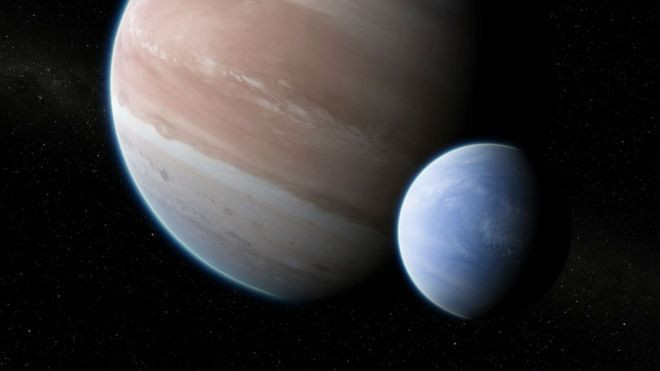Scientists Discover Volcanic Moon Like In ‘Star Wars’

Scientists may have discovered a volcanic alien moon orbiting a planet that’s on the brink of destruction. Due to the hostile and extreme condition of the moon, the scientists likened it to the volcanic planet where Obi-Wan Kenobi and Anakin Skywalker fought one another in “Star Wars: Episode III – Revenge of the Sith.”
According to scientists from the University of Bern in Switzerland, the exomoon, which is a moon that orbits a planet outside the Solar System, is very similar to Io, the volcano-covered satellite of Jupiter.
Like Io, which is the most volcanically active cosmic body in the Solar System, scientists theorized that the newly discovered exomoon may have flowing lava on its surface. Due to its harsh environmental condition, it is unlikely that exomoon can support life.
Due to its volcanic nature, the scientists noted that it could be similar to the fictional planet Mustafar featured in “Revenge of the Sith.” This was the place where Obi-Wan Kenobi maimed Anakin Skywalker after gaining the high ground during a lightsaber duel.
“It would be a dangerous volcanic world with a molten surface of lava,” Apurva Oza, a co-author of the new study about the exomoon said in a statement. “A place where Jedis go to die, perilously familiar to Anakin Skywalker.”
According to Oza and his colleagues, the exomoon orbits an exoplanet known as WASP-49. This planet orbits a star that’s located about 550 light-years from Earth. The researchers said that the tidal forces exerted by the planetary system on the exomoon could be responsible for its volcanic nature. Although the tidal forces keep the exomoon stable, they also heat it up.
As for WASP-49, the scientists predicted that the exoplanet will be destroyed within a few billion years due to its ongoing loss of mass.
“While the current wave of research is going towards habitability and biosignatures, our signature is a signature of destruction,” Oza said. “The exciting part is that we can monitor these destructive processes in real time, like fireworks.”
The study carried out by Oza and his team is set for publication in the Astrophysical Journal.
© Copyright IBTimes 2024. All rights reserved.





















